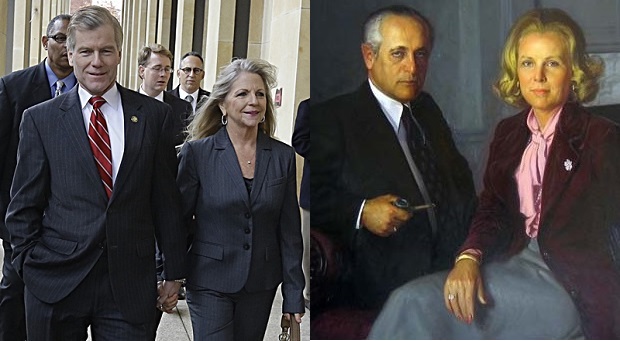Six years ago, the University of Maryland Global Campus (UMGC) created a tax-exempt entity with two for-profit subsidiaries whose continued operations may not make economic sense or be in the best interests of the State. UMGC also:
- awarded $184 million of sole-source work to those entities without competition and failed to ensure payments were proper;
- failed to monitor a $26 million IT project awarded to one of the entities whose work was so defective that the software was abandoned;
- could not justify two sole-source procurements totaling $175 million; and
- was incapable of monitoring millions of advertising works due to vaguely written contract language.
So says the Office of Legislative Audits (OLA) in an audit made public last week.
Auditors also concluded that UMGC may not have complied with applicable laws, rules, and regulations and that UMGC’s problems could adversely affect its ability to maintain reliable financial records and operate effectively and efficiently.
UMGC is one of 11 degree-granting institutions in the University System of Maryland (USM), specializing in online education for working adults with the great majority of degrees awarded in Business/Marketing and Computer and Information Sciences. In February 2015 UMGC, following USM’s approval, changed its business model—which enabled broad autonomy from USM; numerous exemptions from State laws, rules, and procedures; as well as heightened protections of its proprietary and competitive assets. During fiscal year 2023, UMGC budgeted 1,032 employees and 2,370 contractual positions; revenues totaled almost $500 million, including approximately $47 million subsidy from the State’s general fund.
The most important findings were:
1/ Auditors questioned whether continued relationships with three outside entities were sensible
In 2015-16, UMGC created three independent entities, two of which were spinoffs of its information technology unit and its data analytics unit. The intent was mostly to commercialize UMGC’s technology expertise, business processes, and intellectual property and, by doing so, expand its revenue sources into new areas and address UMGC’s long-term challenges in maintaining its position in a changing global marketplace. The idea was that the tax-exempt holding company’s subsidiaries would make money by selling IT consulting services to other universities. UMGC contributed $25 million in capital to start-up two of the entities and subsequently invested $2 million in new capital despite material operating losses of the entity that received that investment.
Auditors found UMGC hadn’t conducted formal or comprehensive evaluations of these entities’ performance despite continuing to sustain their operations with hundreds of millions of sole-source contract revenues and adding millions of capital infusions (auditors found that 92% of $215 million revenues for two of these entities derived from UMGC contracts). Still, despite significant capital infusions and exclusive use of the entities for services, UMGC had essentially no oversight or control and couldn’t provide critical information to auditors about operations (including the salaries being paid to its employees, procurement practices, ethics policies, and internal controls).
2/ Auditors suggested the contractual relationships between UMGC and its satellite entities weren’t arms-length
Specifically, UMGC obtained information technology (IT) services from its satellite entities totaling approximately $184 million from November 2018 to December 2022 without competitive procurement and without verifying that payments were proper.
3/ Auditors reported UMGC didn’t adequately monitor an IT project by one of the entities Worse, the software developed under the project posed “significant, operational, financial and regulatory risk to UMGC” and was ultimately abandoned after the project exceeded its $21 million budget and UMGC expended $26 million. Auditors said none of this misspent money is likely to be recoverable.
4/ Auditors noted several exceptions concerning large advertising procurements
UMGC awarded $500 million for advertising services under two master contracts whose statements of work were insufficient to allow UMGC to monitor performance; and without formal or documented procedures for seeking competitive bids and assigning work. Further, UMGC didn’t adequately justify two sole source awards; and it split procurements to avoid more stringent procurement rules for awards exceeding established thresholds.
UMGC’s formal response to the audit indicated it would implement corrective actions for 19 of 21 recommendations, but it disagreed with two—which the auditors disputed. Therefore, UMGC has been responsive to the audit and it has had a reasonable record of resolving prior years’ audit recommendations.
The scope of the auditor’s work required them to dig into complex activities between UMGC and its satellites. However, USGC denied access on grounds of Internal Revenue Service rules requiring arm’s length relationships among the entities. This denial appeared to be a significant scope limitation adversely affecting the auditor’s ability to pursue leads and develop findings.
In sum, auditors found UMGC:
- Created three satellite entities whose operations aren’t commercially attractive outside UMGC, and aren’t providing any significant return on investment (and may be losing money); and
- Obligated $500 million for advertising services that haven’t produced higher enrollments.
Aside from the audit findings, USGC has operated for decades in a cloistered or non-transparent manner. It is a public entity that doesn’t publicize or give ready access to its tax returns, performance metrics, and audited financial statements; or any of the eight annual reports mandated by the state legislature including a “Financial Information Statement of Global Campus Management” and “Annual Internet Project Plan”.







Recent Comments